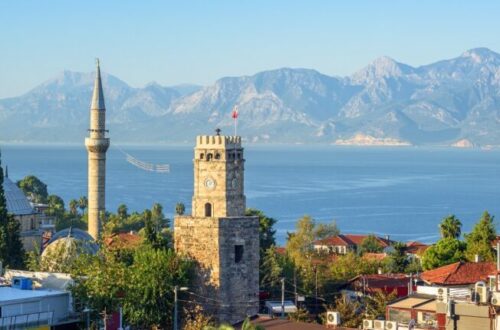
In Turkey, this miracle plant (silphium) was believed to have been extinct for 2,000 years
Very popular in the Mediterranean basin during Antiquity, silphium disappeared 2,000 years ago to reappear in Turkey. Nevertheless, a Turkish researcher thinks he has rediscovered this plant with many medicinal properties.
Silphium in Turkey : A highly sought-after plant at the time
“During the reign of Julius Caesar, more than 450 kg of this plant were stored very close to the gold reserves, in the imperial treasuries of Rome, and the young plants of silphium had the same monetary value as silver” perhaps we read in an article published by National Geographic on September 28, 2022.
The plant in question is therefore the legendary silphium of Antiquity, highly sought after by the Greeks, Romans and Egyptians in particular. At the time, this plant was credited with anti-inflammatory and anti-carcinogenic properties. This also served as a universal medicine – or miracle plant. Indeed, silphium could treat epilepsy, insect stings, bites, baldness, pleurisy or dental pain.
However, if it is estimated that the plant disappeared 2,000 years ago, the researcher Mahmut Miski thinks of having discovered a specimen in the region of Cappadocia (Turkey). The person concerned, who works for the pharmacognosy department of Istanbul University, is behind a publication on the subject in the journal Plants in 2021.
The plant that Mahmut Miski found is none other than Ferula drudeana, usually growing on Mount Hasan. However, the specialist has established many similarities with silphium, using old botanical texts and coins from ancient Greece representing the plant. According to Mahmut Miski, both plants have the same kind of root (thick and branched) and give yellow flowers. These physical similarities are thus added to those concerning their medicinal properties.
Nevertheless, there remained until there is little doubt that the Ferula Drudeana is the same plant as the silphium. Indeed, the region of Cappadocia (place of the recent discovery) and Mount Hasan (place of origin of the silphium) are at a distance of several hundred kilometers. On the other hand, the fact that Mount Hasan was inhabited by the Greeks at one time makes the hypothesis quite possible. They may have simply transported the plant. In addition, the two regions mentioned have a fairly similar climate (Mediterranean).
Finally, archaeobotanical expert from the Royal Holloway University of London, Erica Rowan, confirms that Ferula Drudeana is indeed the plant represented on Greek coins. However, there is only one way to be completely certain that Ferula and Silphium are the same plant. Indeed, it would be necessary to be able to have access to a sample of silphium from more than 2,000 years ago and to carry out a comparison. Which, of course, is not possible.




